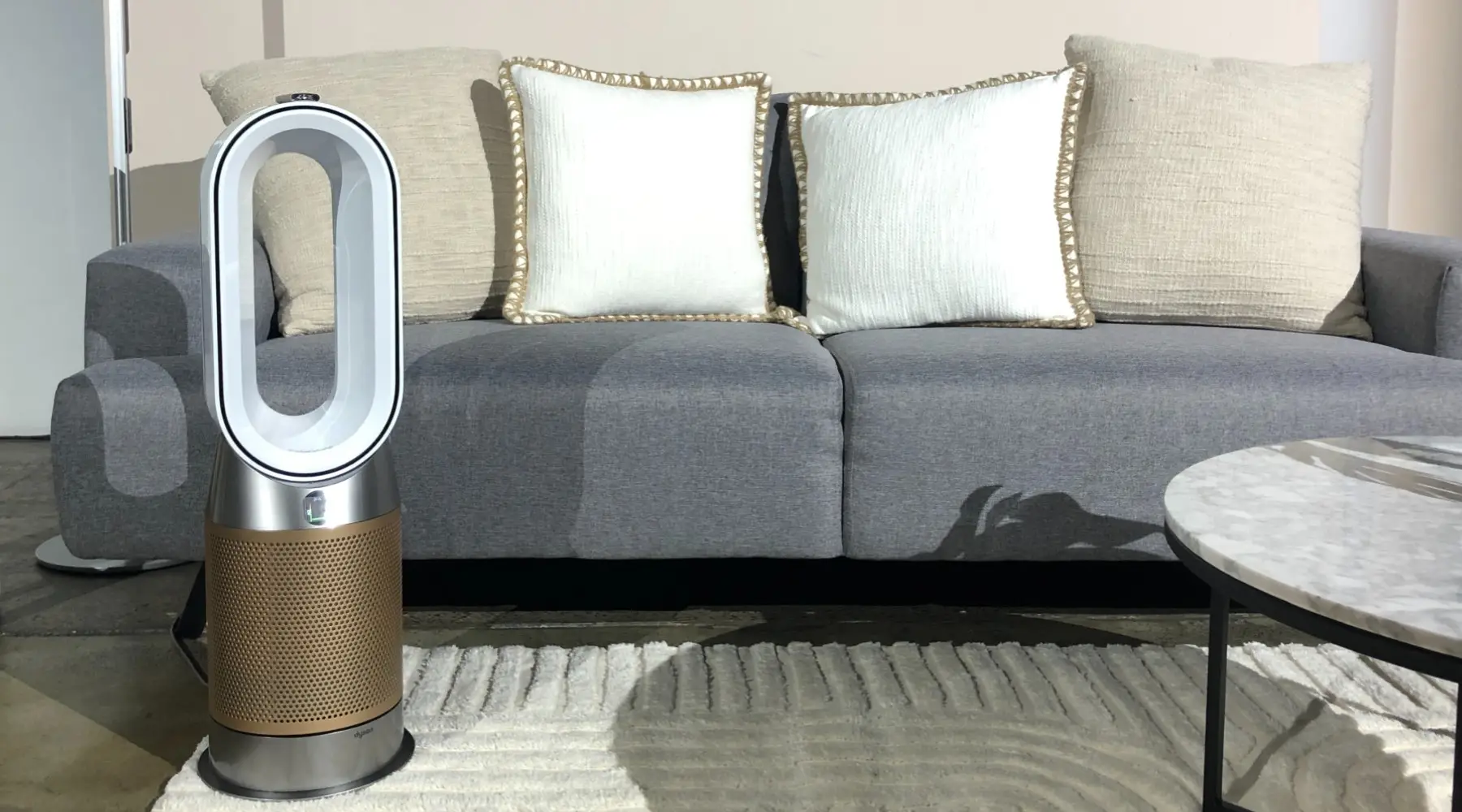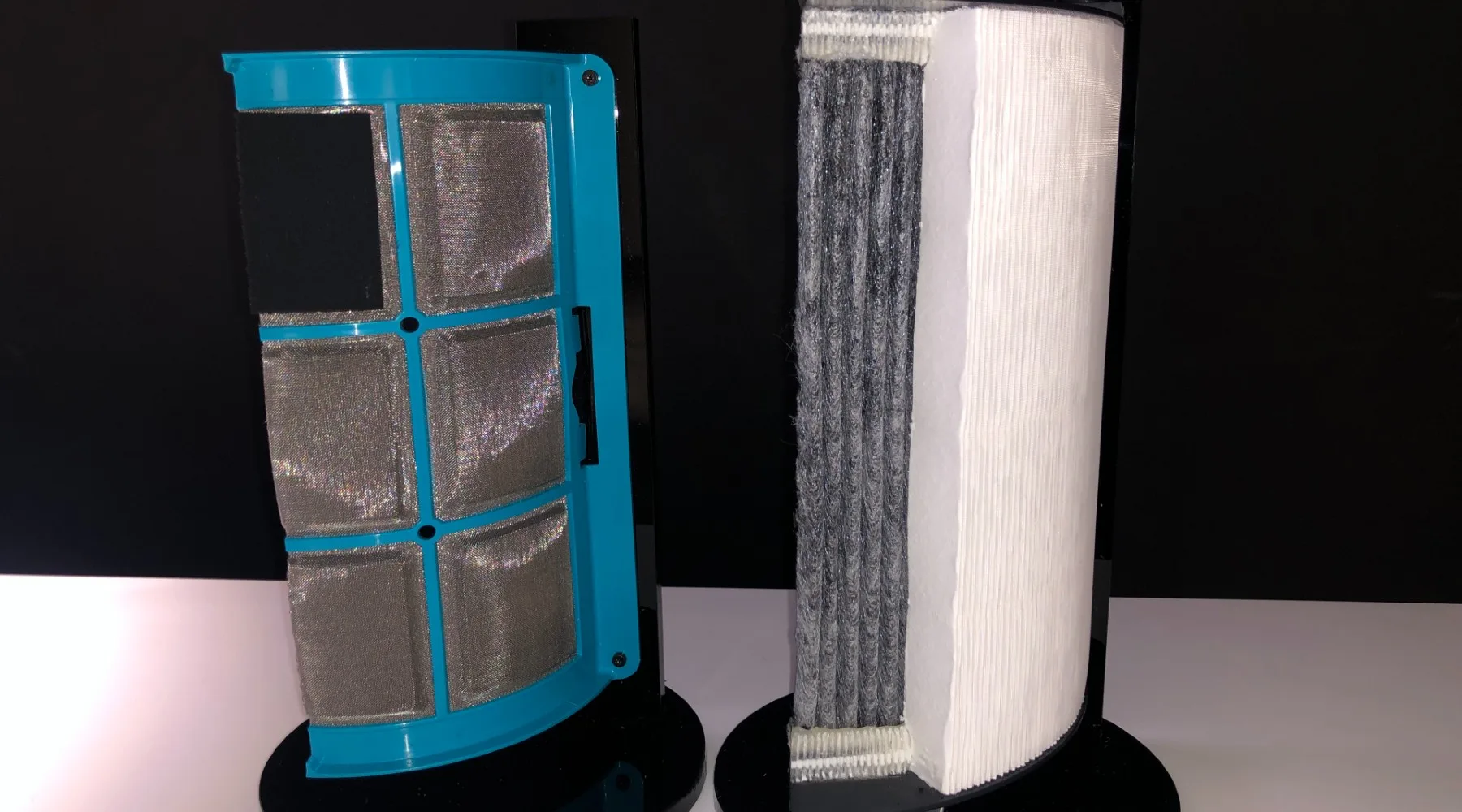Dyson’s new air purifier: The Aussie bushfire connection

Dyson's new Formaldehyde range captures harmful pollutants caused by bushfires, cleaning products and more.
If one positive came out of 2020, it's that global awareness of air quality has dramatically increased.
From the choking smoke that accompanied Australia's devastating bushfires to the COVID-19 crisis, we are now more cognisant than ever of the air we breathe.
With this in mind, tech giant Dyson has created a range of air purifiers that are designed to capture and even destroy potentially harmful volatile organic compounds (VOCs), including those from bushfire smoke.
Launching in Australia in May, the new Formaldehyde range will expand on Dyson's previous air purifier models, through the addition of solid-state formaldehyde sensing technology.
What is formaldehyde?
Formaldehyde is a colourless gas pollutant which is released by man-made items like furniture, paint, varnishes and household cleaning products, as well as by natural sources such as bushfires.
According to the South Australian health department, the formaldehyde levels released by consumer goods, "can be irritating to the eyes, nose, throat and the lungs."
High level exposure can meanwhile have "major toxic effects", and cause "coughing, wheezing, chest pains and bronchitis."
How does the Dyson Formaldehyde Air Purifier work?
Where other formaldehyde sensors on the market utilise a gel-based sensor which can deteriorate over time, Dyson's Formaldehyde range uses an electro-chemical cell to stop its sensor from drying out. According to Dyson, this sensor should last for the lifetime of the machine.
The sensor also works alongside a unique algorithm to precisely monitor formaldehyde levels in the air, while ignoring other gases that are detected by a dedicated VOC sensor.
A Selective Catalytic Oxidisation (SCO) filter then traps and destroys the formaldehyde at a molecular level, breaking it down into small amounts of water and carbon dioxide.

Dyson Formaldehyde filter.
Claiming to remove 99.95% of particles as small as 0.1 microns, the Formaldehyde range has also been engineered to achieve sealed HEPA 13 standard filtration.
In simple terms, this means the purifier will not only ensure that no air bypasses its filter, but that it will also block any potential leak points to stop the formaldehyde from being released back into the air.
President of environmental care at Dyson, Alex Knox, said in a release, "the COVID-19 pandemic has raised global awareness about the air that we breathe and Dyson's commitment to providing cleaner air through innovation and technology remains at the forefront of our mission."
"The off-gassing tendency of formaldehyde means that it can go undetected in a home for years. Dyson has engineered a machine that provides accurate and successful sensing, capture and destruction of the pollutant."
Additional features
Similar to previous models, the Dyson Formaldehyde range also features particle, NO2, VOCs, temperature and humidity sensors and comes with a remote control which can be magnetised to the machine for easy use.
The air purifiers can be controlled through the Dyson link app, pre-set at intervals ranging from 15 minutes to 9 hours and used with Google Home, Alexa and Siri.
The range is also 20% quieter than previous models, with noise output reduced from 64 to 61 decibels at maximum fan speed.
When and where to buy
The Dyson Formaldehyde line will be available in Australia from Thursday 27 May 2021 at Dyson, The Good Guys, Bing Lee, Myer, David Jones, JB Hi-Fi and Harvey Norman.
The range includes both the Dyson Purifier Hot+Cool Formaldehyde for $999 and the Dyson HEPA Cool Formaldehyde for $799.
- Want to compare air purifiers? See our guide to the best air purifiers in Australia.
Looking for more ways to save? Check out today's top 5 deals and our huge database of coupon codes.
Images: Finder